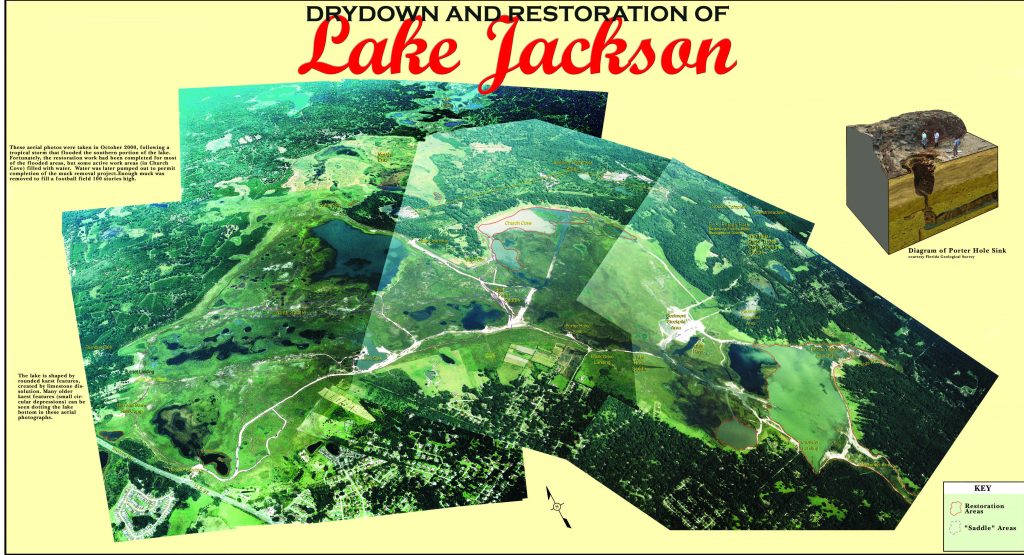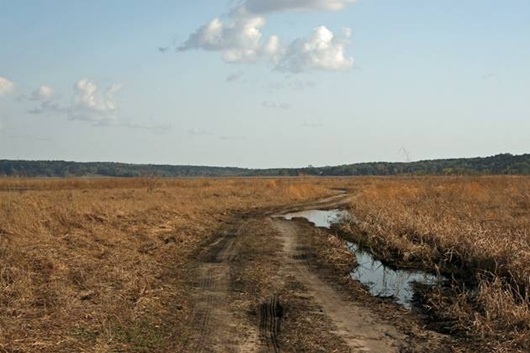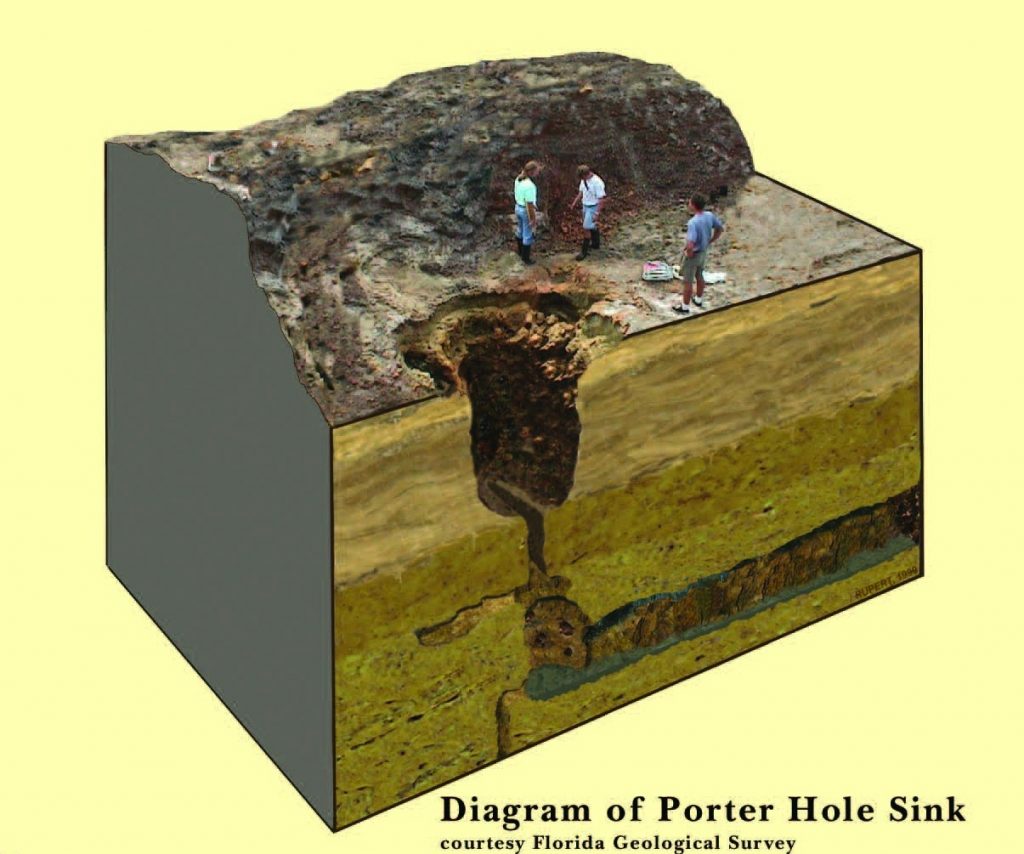Lake Dry Down Events
Video of Drydown Event December 2002
 NATURAL DRYDOWN
NATURAL DRYDOWN
Lake Jackson is a shallow, natural waterbody of approximately 4.000 acres, surrounded by a 27,000 acre closed drainage basin. Except for extreme high water, there are no streams or outlets leaving the lake. The water that enters the lake through direct rainfall and stormwater runoff usually leaves the lake through evaporation, leakage through sinkholes or seepage through sediment in the lake bottom. These conditions cause the surface level of the lake to fluctuate in direct response to rainfall patterns.
Lake Jackson has had a number of drydown events over the past century. Reports of drydown or extremely low water have been documented for 1907, 1909, 1932, 1935,1936, 1937,1957,1982 and 1999. These natural events are often frustrating to lake users and lakefront landowners, but they are quite beneficial to the long term ecology of the lake. Lake Jacksons ecosystem is well adapted to fluctuating water conditions, and the fluctuations and drydowns help maintain the diversity of wildlife habitat and improve water quality. See Lake Historic Water Levels

RESTORATION
In the Spring of 1999, it became apparent that there might be an opportunity to perform restoration activity. Since the timing and length of the drydown could note be predicted, it was necessary to have plans in place to initiate the work and accomplish as much as possible in a short period of time.
Restoration work started in the shallow portions of Fords and Meginnis Arm, which are shallower and became dry earlier. The first phase removed some 400,000 cubic yards of muck from about 140 acres of lake bottom. During the second phase, more than 1.6 million cubic yards of muck were removed from another 460 acres of lake bottom.
Our thanks to the Northwest Florida Water Management District for providing the images and data presented in this article.

The Porter Sink Hole
Draining of Porter Hole Sink on June 12, 2006 – an eyewitness account
I did not make it out to Lake Jackson over the weekend to see Porter Hole drain down, so I took my 11 year old daughter out there this afternoon after her dentist appointment.
Newspaper reports and word from friends was that the hole appeared to have stopped draining and a pool was filling up in the sink basin. We arrived at Porter Hole around 4:45 pm and there was a pool about 6-8 feet deep over the top of the main drain, where a few people were fishing with live bait. After looking around for about 10 minutes someone let out a shout and we soon witnessed an amazing event. The water started bubbling in a number of spots and a whooshing sound was coming from a small sink on the east bank. At this point I ran back to the truck for my camera.
When I got back, there was a visible whirlpool, but it was not in the spot where the “old” hole is located. It was about 15 feet north, in a spot where a collapse was evident during the previous drainings. This spot was also visible from below when the cavern explorers previously ventured northward up the main horizontal fissure.
The water level was dropping steadily and the whirlpool grew larger until the water drained into the open hole. Small channels continued to pour water (and many, many fish, both dead and alive) into the “new” hole, and the hole grew and grew in size. Huge chunks of the sandy layer in this area would cleave off and crash into the hole. The other hole has an edge of hard clay, but this one only exhibited some of this material – most if it is loose sand, so the erosion was pretty fast.
The word must have traveled fast, as a many people showed up to see what was going on. I had witnessed all of the draining in 1999 and a couple of other times that it drained after that, but this one was much different in the way it started. An absolutely amazing natural event!



With lower than average annual rainfall over the past several years, we see it happening more frequently – see the newspaper coverage from June 20, 2012:This natural drawdown has been happening for a very long time! It is simply a part of the Lake Jackson cycle of life. Please refer to an article written in 1842 about the drawdown phenomena…the language is most interesting and certainly a different English than we use today!
An article in the March, 2013 New Yorker magazine was about Florida sinkholes and mentioned the Lake Jackson dry downs…
Click here to read the article in the New Yorker.

